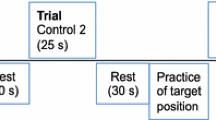Summary
PURPOSE: Mice have been increasingly used to study the stomatognathic function, since genetically modified mice are expected to enhance our understanding of neural and motor disorders of the craniomandibular system. However, fundamental characteristics of jaw movements in mice have not been fully understood. In the present study, the jaw movement of mice during chewing foods of different textures was analyzed in relation to the coordination of the masseter and the temporalis. MATERIAL AND METHODS: At 11 weeks of age, electrodes were placed in the masseter and the temporalis for electromyography (EMG) recording, and jaw movement was measured using a three-dimensional jaw-tracking system. Hard food and soft food were tested. RESULTS: The jaw movement trajectories of mice in the sagittal plane showed antero-posterior excursions unlike those of human or other animals. Larger antero-posterior discrepancies between the opening and the closing paths were observed when chewing hard food, especially at the late-closing phase. The average amplitude of the temporalis was significantly larger at the late-closing phase when chewing hard food than soft food. Conclusion: Characteristic masticatory jaw movements in mice which include the divergence between jaw-opening and jaw-closing paths may be due to the earlier onset of the temporalis activity than that of the masseter. Also, anatomic factors such as the orientation of closing muscles and the shape of the temporomandibular joint may be attributed to the jaw trajectories specific to mice. During hard food chewing, the jaw closes at a more posterior position, which could extend the grinding path at the occlusal phase followed by anterior excursion, and consequently, the efficiency of grinding of food would be increased.
Similar content being viewed by others
References
Nakamura Y, Katakura N. Generation of masticatory rhythm in the brainstem. Neurosci Res 1995;23(1):1–19
Takada K, Yashiro K, Sorihashi Y, Morimoto T, Sakuda M. Tongue, jaw, and lip muscle activity and jaw movement during experimental chewing efforts in man. J Dent Res 1996;75(8):1598–606
Palmer JB, Hiiemae KM, Liu J. Tongue-jaw linkages in human feeding: a preliminary videofluorographic study. Arch Oral Biol 1997;42(6):429–41
Hayasaki H, Nakata S, Nishijima N, Okamoto A, Minematsu K, Yamasaki Y, Nakata M. A calculation method for the range of occluding phase at the lower incisal point during chewing movements using the curved mesh diagram of mandibular excursion (CMDME). J Oral Rehabil 1999;26(3):236–42
Luschei ES, Goodwin GM. Patterns of mandibular movement and jaw muscle activity during mastication in the monkey. J Neurophysiol 1974;37(5):954–66
Byrd KE. Opto-electronic analyses of masticatory mandibular movements and velocities in the rat. Arch Oral Biol 1988;33(3):209–15
Kobayashi M, Masuda Y, Kishino M, Ishida T, Maeda N, Morimoto T. Characteristics of mastication in the anodontic mouse. J Dent Res 2002;81(9):594–7
Sanefuji K, Zeredo JL, Kurose M, Tanaka M, Koga Y, Yamada Y, Yoshida N. Possible effects of periodontal inputs on the masticatory function. J Jpn Soc Stomatognath Funct 2008;14(1):89–95
Koga Y, Yoshida N, Kobayashi K, Okayasu I, Yamada Y. Development of a three-dimensional jaw-tracking system implanted in the freely moving mouse. Med Eng Phys 2001;23(3):201–6
Okayasu I, Yamada Y, Kohno S, Yoshida N. New animal model for studying mastication in oral motor disorders. J Dent Res 2003;82(4): 318–21
Okayasu I, Yamada Y, Maeda T, Yoshida N, Koga Y, Oi K. The involvement of brain-derived neurotrophic factor in the pattern generator of mastication. Brain Res 2004;1016(1):40–7
Yamada M, Koga Y, Okayasu I, Sanefuji K, Yamada Y, Oi K, Yoshida N. Influence of soft diet on development of masticatory function. J Jpn Soc Stomatognath Funct 2006;12(1):118–25
Farella M, Iodice G, Michelotti A, Leonardi R. The relationship between vertical craniofacial morphology and the sagittal path of mandibular movements. J Oral Rehabil 2005;32(12):857–62
Satoh K. Comparative functional morphology of mandibular forward movement during mastication of two murid rodents, Apodemus speciosus (Murinae) and Clethrionomys rufocanus (Arvicolinae). J Morphol 1997;231(2):131–41
Yamada Y, Haraguchi N, Oi K, Sasaki M. Two-dimensional jaw tracking and EMG recording system implanted in the freely moving rabbit. J Neurosci Methods 1988;23(3):257–61
Hiiemae KM. Masticatory function in the mammals. J Dent Res 1967;46(5):883–93
Weijs WA. Mandibular movements of the albino rat during feeding. J Morphol 1975;145(1):107–24
Thomas NR, Peyton SC. An electromyographic study of mastication in the freely-moving rat. Arch Oral Biol 1983;28(10):939–45
Morimoto T, Inoue T, Nakamura T, Kawamura Y. Characteristics of rhythmic jaw movements of the rabbit. Arch Oral Biol 1985;30(9): 673–7
Plesh O, Bishop B, McCall W. Effect of gum hardness on chewing pattern. Exp Neurol 1986;92(3):502–12
Proschel P, Hofmann M. Frontal chewing patterns of the incisor point and their dependence on resistance of food and type of occlusion. J Prosthet Dent 1988;59(5):617–24
Bishop B, Plesh O, McCall WD Jr. Effects of chewing frequency and bolus hardness on human incisor trajectory and masseter muscle activity. Arch Oral Biol 1990;35(4):311–8
Hiiemae K, Heath MR, Heath G, Kazazoglu E, Murray J, Sapper D, Hamblett K. Natural bites, food consistency and feeding behaviour in man. Arch Oral Biol 1996;41(2):175–89
Yamada Y, Yamamura K. Possible factors which may affect phase durations in the natural chewing rhythm. Brain Res 1996;706(2): 237–42
Lund JP, Kolta A. Generation of the central masticatory pattern and its modification by sensory feedback. Dysphagia 2006;21(3):167–74
Author information
Authors and Affiliations
Corresponding author
Rights and permissions
About this article
Cite this article
Utsumi, D., Nakamura, A., Matsuo, K. et al. Motor coordination of masseter and temporalis muscle during mastication in mice. J. Stomat. Occ. Med. 3, 187–194 (2010). https://doi.org/10.1007/s12548-011-0068-6
Received:
Accepted:
Published:
Issue Date:
DOI: https://doi.org/10.1007/s12548-011-0068-6




